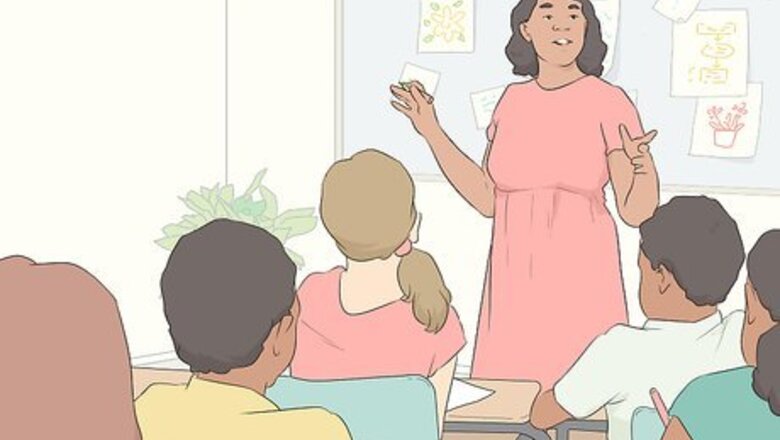
views
Going over the Basics
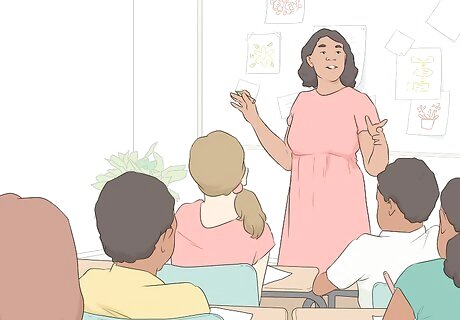
Explain what a summary is to start your lesson. Describe a summary as a brief overview of a story, article, or other piece of writing. Note that summaries are completely factual, and don’t involve any opinions or arguments. Before you jump into the lesson, let your students know that they’ll be learning the basics of summarizing and practicing easy exercises. Be encouraging throughout your lesson! Summarizing can be confusing and stressful to new students, and your support and knowledge will help put them at ease. It may help to use a projector, PowerPoint, or other visual aid while you’re explaining the basics of summarizing.
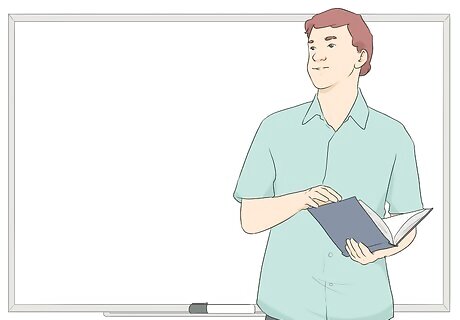
Read a short story or essay with your class. Choose a short passage that won’t take a long time to go over. You can read the passage to your class, or encourage your students to read it aloud, if they so desire. Select a text that’s easy to understand so your students don’t get confused during the summarizing process. For instance, if you’re teaching younger kids, consider using an excerpt from a children’s book. If you’re working with older kids, use an article, biography, or other passage that’s easy to understand.

Help your students highlight any important sentences or ideas. As you read, encourage your students to highlight or underline any important information that helps describe the passage overall. Invite them to look for essential information that answers the questions of who, what, when, where, why and how. Alternatively, you can ask them to cover the book and write the points that stood out. They can jot them down as bullet points or an outline. You can find useful templates online, like ReadWriteThink’s website.Did you know? Many teachers use the GIST method when teaching summaries, which involves writing down the who, what, when, where, why, and how of the passage down on a separate worksheet. If you want to take baby steps into the summary process, encourage your students to first write a 20-word summary, or “gist,” after answering these basic questions.
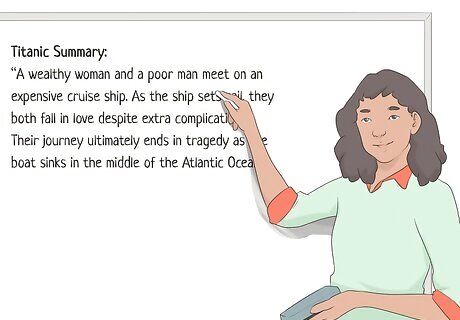
Give an example summary to help your students. Use a popular story or passage to help your students understand what a proper summary looks like. Don’t use the passage you just read—instead, choose a movie or TV show that your students are familiar with, then offer an example summary based on that. Explain how your summary includes the basic information without including unnecessary details. For instance, if you were to summarize the movie Titanic, you may say something like: “A wealthy woman and a poor man meet on an expensive cruise ship. As the ship sets sail, they both fall in love despite extra complications. Their journey ultimately ends in tragedy as the boat sinks in the middle of the Atlantic Ocean.” Remind your students that they’ve probably summarized a story before, like whenever they describe a movie or TV show to a friend.
Creating a Summary

Ask your class to share the sentences they highlighted. Invite individual students to share sentences or phrases that they thought were important. Use a whiteboard, projector, or other type of technology to record your students’ answers into a collaborative list. Continue going around the class until everyone has shared their ideas. For instance, if you were reading a story like “Cinderella,” some main ideas could be how Cinderella’s stepsisters ruined her dress, or how the fairy godmother gives her a new dress to wear. If you’re working with older students and reading a book like “The Pearl,” you may want to focus on when Kino first finds the pearl, as well as when he tries to sell it.
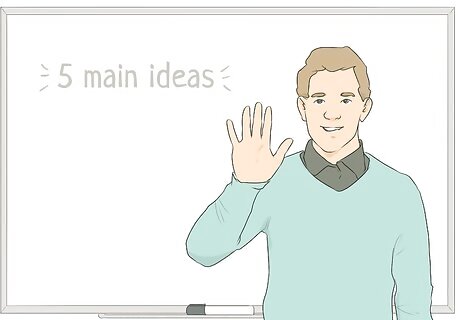
Choose 5 main ideas that really sum up the main story. Go through the list of ideas that you’ve collected from your students. While you’ve probably received some duplicates, you may have some ideas listed that are more or less important than others. Invite your students to choose points that really capture the essence of the passage without lingering on unimportant details. For example, in “Cinderella”, the fairy godmother giving Cinderella a dress and carriage would be more important info to include in a summary than the fact that Cinderella had a dog and cat. If you’re working with older students, you may work with a story like “The Great Gatsby.” In this case, a main idea would be the pursuit and failure to find happiness, as opposed to a statement on what Gatsby’s home looked like.
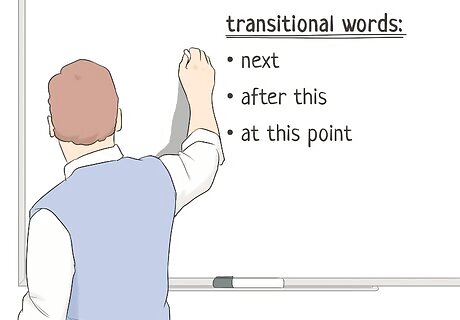
Include transitional words to connect the ideas together. Separate the 5 main ideas into a list, then start figuring out how to connect the points together. Encourage your students to use transitional phrases like “next,” “after this,” or “at this point” to make their summary sound smooth and polished. Work on an example summary together so your students have a clear idea of what they need to do. If you’re summarizing an article or passage where someone is stating their opinion, use phrases like “according to” to keep your summary unbiased. If you’re summarizing a story like “Jack and the Beanstalk”, try writing a summary like this: “Jack uses his family’s money to buy a packet of magic beans. To prove to his annoyed mother that he didn’t waste their money, Jack plants the seeds and climbs the beanstalk that grows. At this point, he finds a giant’s kingdom and steals their golden egg, which provides lots of money for Jack’s family in the end.”

Encourage your students to reword and paraphrase in the summary. Remind your class that they don’t want to copy the words from the article verbatim, which counts as plagiarism. Instead, show them how to paraphrase sentences in their own words. Give your students time to practice rewriting their own sentences using the example passage and summary. If the original text says something like, “The girl ran through the woods to escape her attacker,” you can paraphrase it to “A wolf started chasing the girl, so she ran very fast to get away.” If an essay or article says something like, “The government will try to pass the new law next year,” you can paraphrase it to “According to members of the government, the traffic law will be passed relatively soon.”
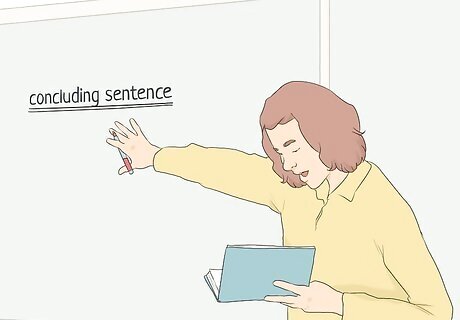
Add a concluding sentence to tie up the summary. Ask your students to come up with a sentence that helps tie up any loose ends in your communal summary. Explain that the sentence should wrap up the summary without restating any of the original information, which would make the summary seem repetitive. For instance, a concluding sentence for a summary of “Star Wars Episode 6” could be: “Luke, Leia, and Han reflect on the past before focusing on everything the future holds for them.”
Providing Extra Support and Encouragement

Offer another passage for your students to read and mark down. Offer an article, biography, or other easy passage that your students can read quickly. Give them time to go through the passage and mark down 5 main ideas that can be included in the summary, as well as the who, what, where, when, why, and how. Try to let them figure out the information on their own so they can become more confident in their summary writing skills. Remind your students that you’re there to help if needed. For instance, if you and your students are reading “Romeo and Juliet”, you could mark down the “who” as Romeo and Juliet, the “what” as a tragic love story, the “where” as Verona, the “when” as Shakespearean era, the “why” as a family feud, and the “how” as a pair of tragic suicides.
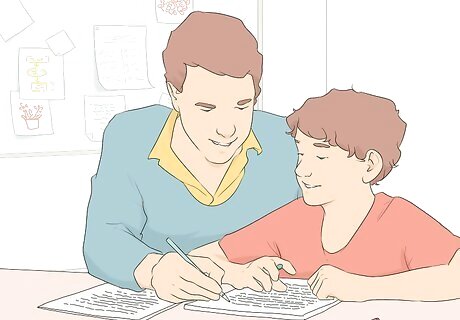
Invite your class to write a practice summary. After your students have collected the key points and information from the passage, invite them to write a short summary that’s only a few sentences long. Once they’re finished writing, review the summaries to see how well your students did. Give feedback whenever necessary, and help your pupils to streamline their writing whenever possible. For example, in a summary of “Three Little Pigs,” you can write something like: “Three pigs have their lives frequently disrupted by a villainous wolf who destroys their home. They are finally safe when they seek shelter in a sturdy house that the wolf cannot blow away.” A summary of “The Outsider” might sound like this: “Several boys are involved in a gang conflict that threatens to tear apart their small community.”Tip: If you’re students are having trouble writing short, concise summaries, encourage them to summarize a passage in 1-3 sentences. Once they get the hang of writing short summaries, encourage them to add a little more information.

Encourage your students to try verbal summaries first. If your students are hitting a roadblock, ask them to verbalize what they’ve just read in a few sentences. This exercise may give them some helpful clarity, and provide them with ideas for their written summary. A verbal summary may sound like this: “Star Wars starts off in a galaxy far, far away, where a galactic war is currently going on. The heroes of the franchise, Luke and Leia, fight against their long-lost father, who’s the main enemy.”
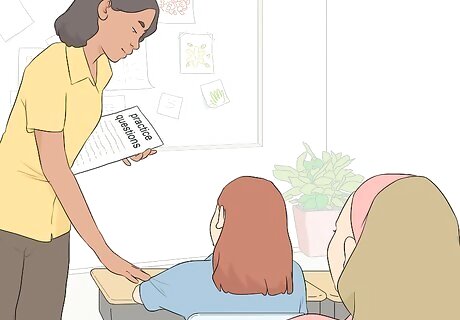
Give your students practice questions to answer about summaries. Hand out a worksheet to your pupils, along with some sample passages. Encourage students to work together to write practice summaries on the worksheet, using the samples provided. Once they finish writing, review the summaries to see how they did.

















Comments
0 comment